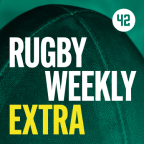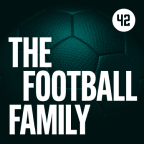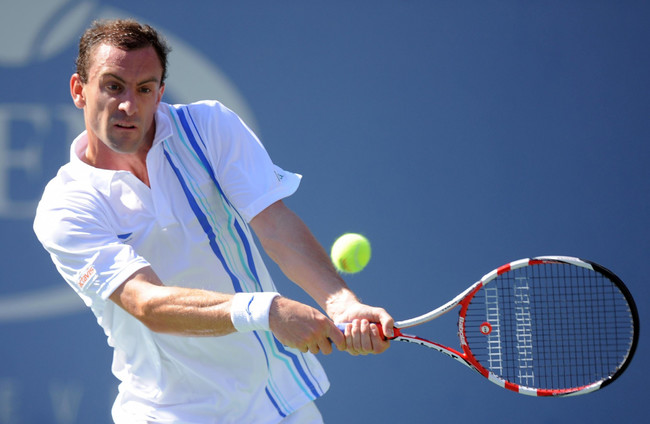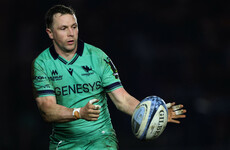CONOR NILAND’S career might seem unremarkable to someone who doesn’t know much about tennis.
The Limerick-raised player won zero titles and spent most of his time on the Futures and Challenger circuits.
The now-42-year-old’s highest singles ranking was number 129 back in December 2010.
He spent eight years as a professional player, starting in 2005 and finishing in 2012 — a painful and recurring hip injury prompted his retirement.
But a new memoir, ‘The Racket,’ written in collaboration with The 42‘s Gavin Cooney, shows how the odds were stacked against him from the beginning and makes a case for Niland as one of the great underdog stories of Irish sport.
He never made it past the first round of the US Open and Wimbledon, however, it could be argued that reaching this stage was a minor miracle in the first place.
In 2011, he beat Josselin Ouanna, Greg Jones, and Nikola Mektić to become the first Irishman to qualify for the main draw at Wimbledon since Sean Sorensen in 1980.
Although Niland ultimately lost to Adrian Mannarino, the fact that no Irish player has since emulated this feat underlines its difficulty.
Niland’s playing career should therefore not be overlooked or underestimated.
Moreover, he applied a similar intensity and work ethic to writing ‘The Racket’ — he was initially approached about a book “seven or eight years ago”. However, it wasn’t until the pandemic when he had more time on his hands that the ex-athlete properly tackled the project.
Its release comes over 12 years after his retirement.
“I think that distance from my career helped a little bit with perspective and gave me time to process everything,” he tells The 42.
The book combines the story of Niland’s career with more general insights into how professional tennis operates and why the elite players invariably receive favourable treatment compared to “the other 99%”.
One of the overriding themes is what separates an all-time great, Roger Federer or Rafa Nadal for instance, from the less venerated pros like Niland, who in many cases struggle even to make a good living from the game.
Two aspects ostensibly key to greatness are an early immersion in the sport and at least one parent with a strong desire for advancement comparable to their child.
“Andy Murray was the grandson of a professional footballer; his route to the top was via a highly motivated, tennis-savvy mother, who was Scotland’s national coach at the beginning of his competitive journey,” Niland writes. “Judy Murray knew the importance of an early start and even had a genius for making tennis-related games fun for children.
“One of Rafa Nadal’s uncles played football for both FC Barcelona and the Spanish national team, and another was a tennis coach who had been training his nephew for at least 90 minutes a day by the time little Rafa was seven.”
Niland also describes tennis as “our family business”. His mother was a competitive junior player while his father played Gaelic football for Mayo.
He was told he hit his first shot over the net at 18 months, while his older siblings, sister Gina and brother Ross were among the best junior players in Britain growing up before the family moved home to Ireland from Birmingham, where Conor was born.
As a youngster, Niland loved tennis but as his teenage years approached, it started “to become a bit more like doing your homework”.
He first told his parents he wanted to quit playing at 10. Nevertheless, “they didn’t yield then, and never did”.
A pertinent question Niland poses is: “Who decides you’re a tennis player? Is it the six-year-old, or is it the six-year-old’s parents?”
Whatever the answer Niland believes fathers, mothers or sometimes both are pivotal to a child fulfilling their dreams except for the rare instances where “you have an incredibly progressive national federation that selects you at eight or nine and brings you into a programme, and it’s a coach-led approach”.
He adds: “Your parents need to enter you in the tournament and drive you, to stay there for the day.
“A tournament can last all day, six or seven days of a week if you’re doing well.
“So 99% of tennis players need at least one parent focused on creating that [optimal] environment.”
In addition, tennis coaching tends to be very expensive — that is why it is so common for parents of aspiring athletes to become their coach, to save money.
Niland’s parents were no exception — they were heavily involved in driving this ambition.
He admits there were times between the ages of 12 and 16 when “I felt like I was getting a little bit pushed to play”. Nonetheless, he was ultimately “grateful” for the “amazing opportunities” that came his way owing to this disciplined upbringing and relentless pursuit of stardom.
“My parents were pretty conservative compared to many tennis parents,” he explains.
“We decided to go to Millfield, a boarding school, I wanted to finish my schooling, and then go to college in America.
“So it wasn’t like my parents were taking me out and sending me off to a tennis academy at 11 or 12 and remortgaging the house, which is what you hear [about others].”
Meanwhile, Niland himself is a parent now. His young son is attending a tennis camp this summer but whether any of the former star’s children continue the sport long-term remains to be seen.
“I’m not ruling anything out,” he says. Certainly, he would prefer them to play out of enjoyment rather than any sense of “pressure” or obligation to follow in their father’s footsteps.
“I think you probably need some of that naivety as a parent to get fully into it because if you know what it takes, you can sometimes be a little bit scared to get involved.”
***
Another recurring theme of ‘The Racket’ is how the gap between the elite players and the supposed also-rans is not as big as people might imagine. Early in his career, Niland beat a then-12-year-old Roger Federer 7-5, 6-2. So why did the Swiss star go on to greatness and not Niland when they were ostensibly at a similar level in that age group?
It is down to multiple factors but coaching and time spent on the court practising is key. Niland notes how, unlike him, the big four of Federer, Nadal, Murray and Novak Djokovic all left school at 16.
“I think those decisions between the ages of 12 and 16 can really influence your trajectory in pro tennis,” he says. “I was in Limerick, probably doing something similar at 14 than what I was doing at 11. Whereas these top guys were upping it all the time, and that was the difference.”
During that short but crucial period, Niland believes he got left behind.
“When I was eight, I dreamed of winning Wimbledon,” he writes. “By the time I was 12, returning from Europe and losing in the first round of junior events to guys who played like pros, that felt far-fetched. By then, I dreamed of one day playing at Wimbledon.”
Niland admits he even doubted he’d ever become a pro tennis player, and it wasn’t until his early 20s that the Irish athlete revised this opinion.
Going to college in the US and getting to number three in the NCAA tennis rankings led to a change in mindset.
“It showed that I was potentially going to be a top 200 player, top 150 player, based on the history of those rankings,” Niland recalls. “Wayne Ferreira, a [former] top 10 player, thought I could do it.
“When you’re in Ireland, and even in England at that time, there were few people who had been there and done that who were able to say: ‘Listen, you’re actually good,’ you know? So we didn’t get a huge amount of encouragement, really, or people telling us we could do it. So it was hard to believe.”
Niland became a top 150 player but could never break the all-important 100 barrier, which was detrimental to his cause for several reasons.
He recounts how the top 100 was “where all the prize money, TV cameras and the glory is concentrated”.
He continues: “Once you’re outside that, you just feel like you’re playing in out-of-the-way places in front of nobody for very little prize money. So it’s tough to have such a strong cut-off.
“Even though the level is little in terms of the difference between a guy ranked 50 and 150 in the world, their worlds in terms of where they are operating, are really different.”
Despite all these factors working against him, less than 12 months before his retirement, Niland made the main draw of the US Open after winning three qualifiers.
It led to the highlight of his career — a match against Djokovic — that also proved bittersweet, as he was forced to retire due to food poisoning having already found himself 0-6, 1-5 down.
Yet Niland already had fulfilled his 12-year-old self’s Wimbledon dream and competing against arguably the greatest athlete in the sport’s history was the icing on the cake.
Djokovic and other elite stars have thrived because of the environment they grew up in, whereas Niland survived notwithstanding his flawed tennis upbringing and limited resources.
Considering where Niland came from and the poor hand he was dealt, it was some achievement to find himself simply competing on the same court as the Serbian icon.
With ‘The Racket,’ Niland finally has a story that properly contextualises his oft-underappreciated achievements and does justice to his legacy.
The most obvious comparison is Andre Agassi’s book ‘Open,’ a similarly honest account of the downsides of being a professional tennis player, albeit at a much higher level.
In his autobiography, Agassi famously confessed that he “hated” tennis. And while Niland doesn’t go that far, he says: “At times I felt like tennis hated me.”
‘The Racket’ has been on bookshelves since June and the reaction has been overwhelmingly positive. It has won admirers for its uncompromising and insightful look at the cold, harsh and deeply unequal world of tennis.
“If I was going to write a memoir, it needed to be honest,” he says. “I think a reader can appreciate that vulnerability. And every day, I get messages — from people I don’t know — telling me they loved the book.”
The Racket by Conor Niland is published by Sandycove, an imprint of Penguin Books. More info here: https://linktr.ee/conorniland















This is the EIGHT article on last night’s ladies game if anyone bothered to watch it..Zero articles on the champions league final tonight. That’s the craic on this app these days..And we pay for this!!